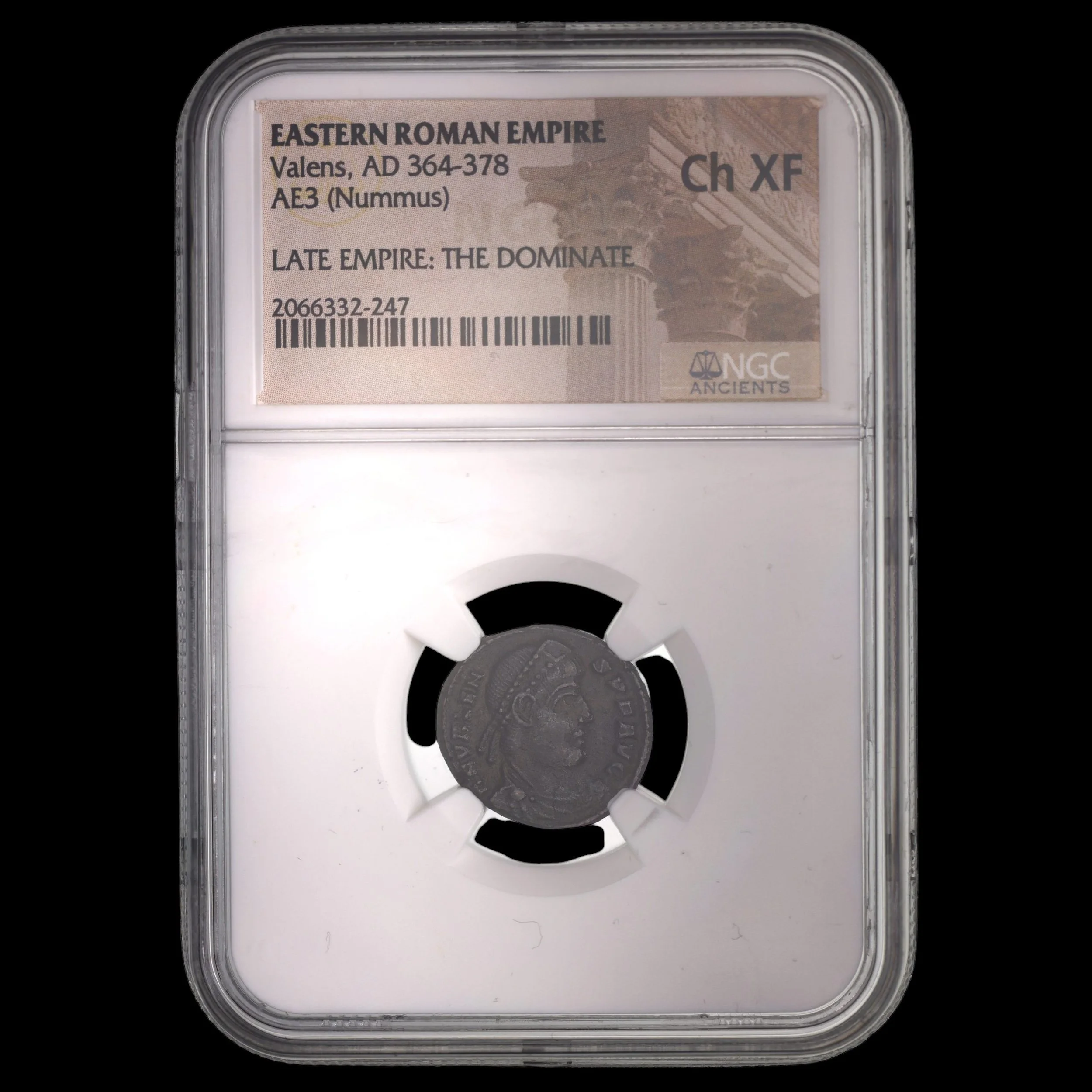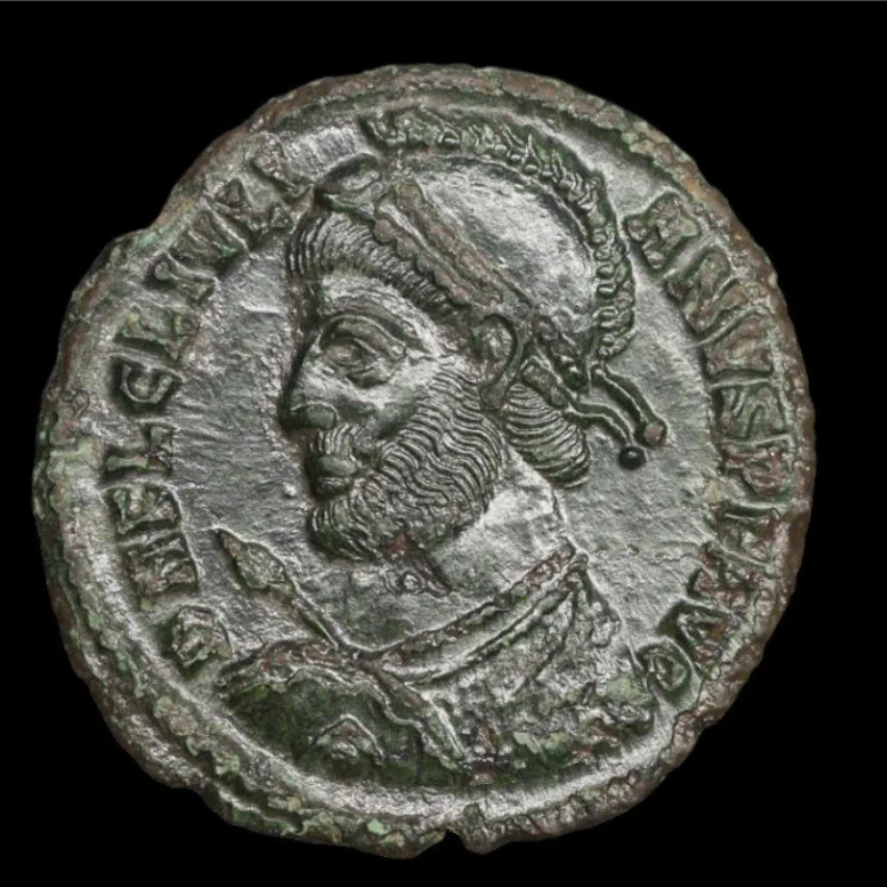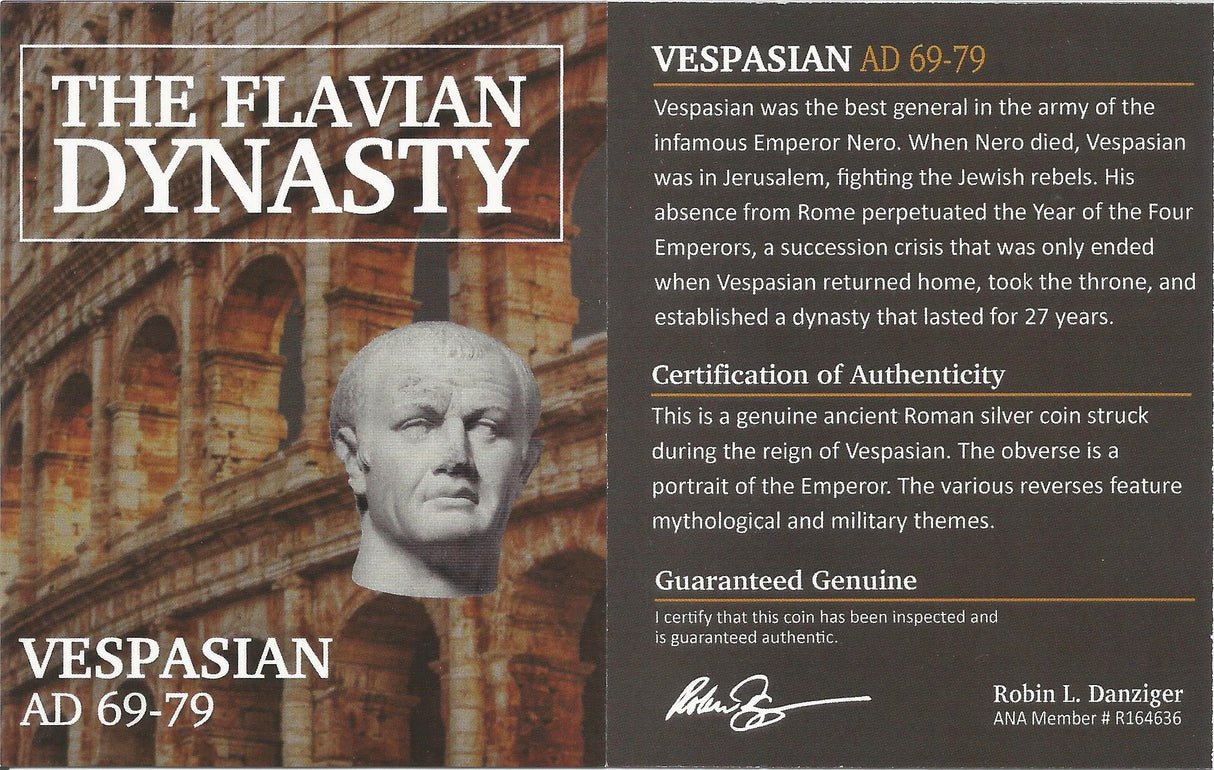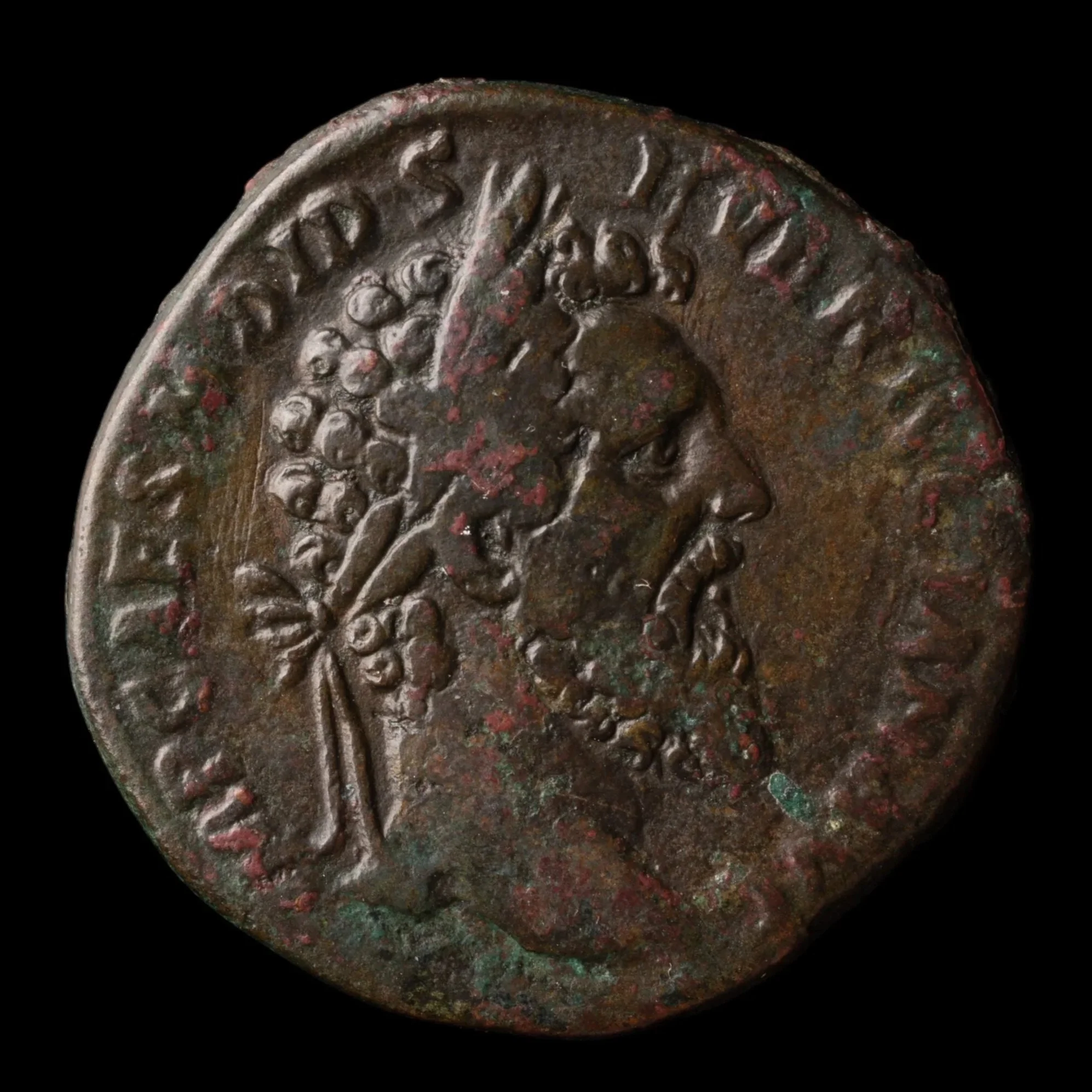 Image 1 of 8
Image 1 of 8

 Image 2 of 8
Image 2 of 8

 Image 3 of 8
Image 3 of 8

 Image 4 of 8
Image 4 of 8

 Image 5 of 8
Image 5 of 8

 Image 6 of 8
Image 6 of 8

 Image 7 of 8
Image 7 of 8

 Image 8 of 8
Image 8 of 8









Roman Bronze Coin of Valens (about 1,647-1,661 years ago)
The coins shown are representative examples of the grade and type, but not the actual specimens for sale. For details on NGC’s grading standards and definitions, please refer to our NGC Grading page.
This bronze coin was issued during the reign of Emperor Valens, who ruled the Eastern Roman Empire for 14 years from 364 to 378 CE. As co-emperor with his brother Gratian in the West, Valens presided over a significant period of Late Roman history that witnessed important infrastructure development and ultimately catastrophic military defeat.
Coin Description:
Front side: Portrait of Emperor Valens facing right, wearing a pearl diadem and imperial robes, with his name and titles in Latin around the edge.
Back side: Likely features late Roman imperial imagery such as the emperor with military standards, Victory figure, or possibly "GLORIA ROMANORVM" (Glory of the Romans) motif common in this period.
Technical Details:
Bronze alloy composition
Denomination: Likely an AE3 or similar late Roman bronze denomination
Weight: Approximately 2-3 grams
Diameter: Approximately 18-20 mm
NGC Certified for authentication and preservation
Minted between 364-378 CE
Condition as specified by NGC certification
Historical Significance: Valens is remembered for two major accomplishments: constructing the Aqueduct of Valens that supplied water to Constantinople (modern Istanbul, Turkey) for over a millennium, and for his catastrophic defeat and death at the Battle of Adrianople in 378 CE. Sometimes called "the Last True Roman" emperor, Valens faced the challenge of Gothic tribes seeking refuge within Roman territory to escape Hunnic expansion. His mishandling of this refugee crisis and subsequent military defeat to Gothic forces at Adrianople resulted in one of Rome's worst military disasters, with historians marking this battle as a pivotal turning point in the decline of Roman military dominance. This coin represents the final phase of traditional Roman authority before the increasing "barbarization" of the Roman military and society.
The coins shown are representative examples of the grade and type, but not the actual specimens for sale. For details on NGC’s grading standards and definitions, please refer to our NGC Grading page.
This bronze coin was issued during the reign of Emperor Valens, who ruled the Eastern Roman Empire for 14 years from 364 to 378 CE. As co-emperor with his brother Gratian in the West, Valens presided over a significant period of Late Roman history that witnessed important infrastructure development and ultimately catastrophic military defeat.
Coin Description:
Front side: Portrait of Emperor Valens facing right, wearing a pearl diadem and imperial robes, with his name and titles in Latin around the edge.
Back side: Likely features late Roman imperial imagery such as the emperor with military standards, Victory figure, or possibly "GLORIA ROMANORVM" (Glory of the Romans) motif common in this period.
Technical Details:
Bronze alloy composition
Denomination: Likely an AE3 or similar late Roman bronze denomination
Weight: Approximately 2-3 grams
Diameter: Approximately 18-20 mm
NGC Certified for authentication and preservation
Minted between 364-378 CE
Condition as specified by NGC certification
Historical Significance: Valens is remembered for two major accomplishments: constructing the Aqueduct of Valens that supplied water to Constantinople (modern Istanbul, Turkey) for over a millennium, and for his catastrophic defeat and death at the Battle of Adrianople in 378 CE. Sometimes called "the Last True Roman" emperor, Valens faced the challenge of Gothic tribes seeking refuge within Roman territory to escape Hunnic expansion. His mishandling of this refugee crisis and subsequent military defeat to Gothic forces at Adrianople resulted in one of Rome's worst military disasters, with historians marking this battle as a pivotal turning point in the decline of Roman military dominance. This coin represents the final phase of traditional Roman authority before the increasing "barbarization" of the Roman military and society.




























